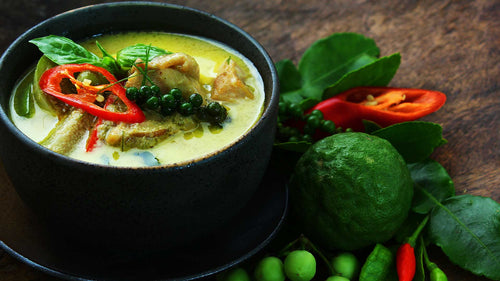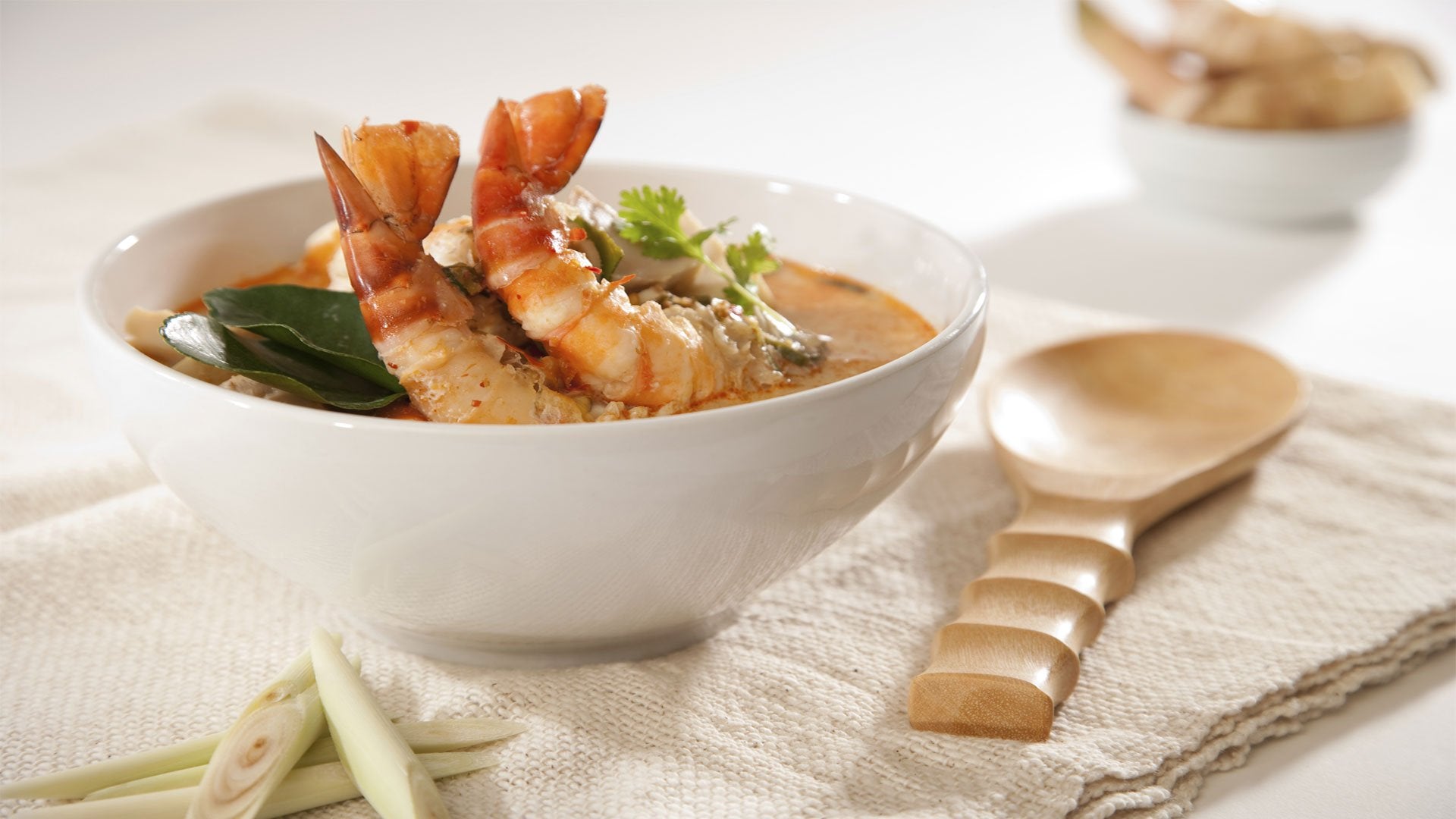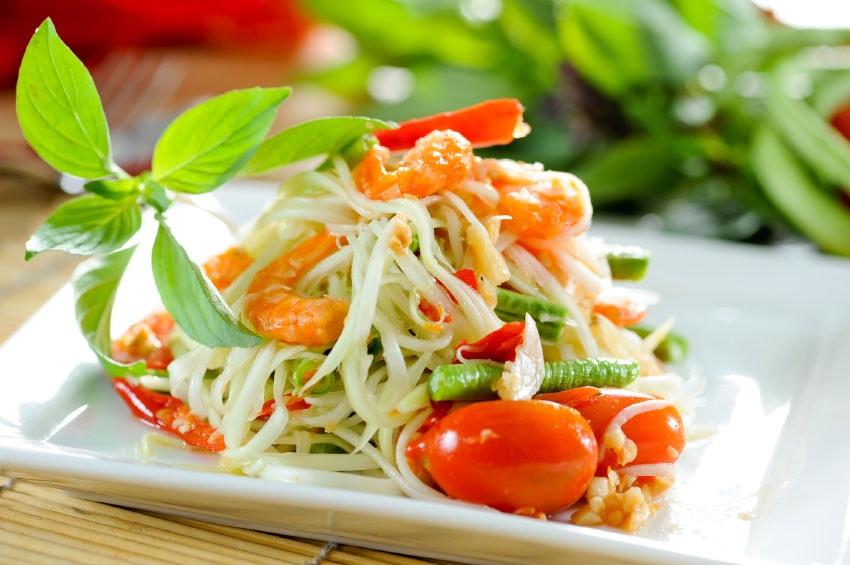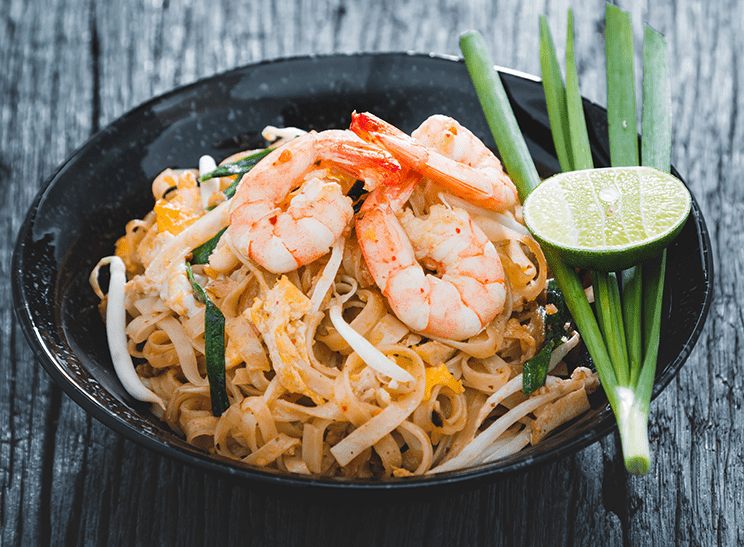What are Thai Aubergines?
Aubergines (scientifically known as Solanum Melongena) are native to Asia and Africa but can be traced back to originating in India; where they grow both in the wild and through farming and agriculture. Many hybrid varieties of aubergines, including the Thai aubergine have been cultivated over the years.
Thai aubergines specifically, have a few variations of shapes, sizes and colour. Some can be found elongated and cylindrical in shape while others are thick, round and spherical. They also range in colours from dark purple/plum to green and white (sometimes patterned in a ‘graffiti’ style’.
The most popular varieties of Thai aubergines, however, are known as Thai round ‘eggplants’, which are crunchy and have a very mild bitter taste. These are green with white ‘graffiti’ bases, spherical in shape and have smooth glossy skin. Meanwhile, the inner flesh of Thai aubergines is pale green to white and contains many small, brown, edible seeds.
What Are the Health Benefits of Thai Aubergines?
Thai aubergines also offer a great range of health benefits and nutrients in the form of dietary fibre, vitamins and minerals. In fact, a serving of Thai aubergines can provide at least 5% of a person’s daily requirements of fibre, minerals such as copper, manganese and vitamin B-6, nearly 100g of raw aubergines contain roughly just over 20 calories.
On top of providing a range of nutrients through vitamins and minerals, Thai aubergines offer antioxidants which help protect the body from the damaged effects of free radicals and help to reduce and maintain healthy blood-sugar levels. This also contributes to an improved digestive system.

How to Use Thai Aubergines?
If you have a surplus of the fruit to use up, try pickling it, or freeze it in casserole dishes for future use.
Thai aubergines are a very versatile vegetable and can be used in a range of dishes to be included in many diets. Cooking methods can vary from baking, roasting, grilling or sautéing and their natural flavour can be enhanced with just a little olive oil and a sprinkle of seasoning with salt and pepper.
In Thailand, round aubergines are typically used in curries to add a crunchy texture and flavour. They are also very well suited to tempura or stir-fry dishes. The texture of their flesh means they can also be used as a meat substitute in various Thai and Asian dishes. In recipes, these aubergines complement being paired with herbs and species such as garlic, ginger and bail and other vegetable ingredients such as onions, tomatoes, potatoes and bell peppers.
Thai aubergines are best kept in a cool, dry place for up to 3 days. Generally, they don’t freeze well alone; however, when cooked into a recipe, Thai aubergines can be frozen for future consumption.
Thai Aubergine Recipe:
Preparation before use in a recipe (sweating).
When cutting an aubergine, use a stainless steel, not a carbon steel, knife to prevent a phytochemical reaction that can cause the aubergine to turn black.
Thai aubergines can sometimes have a slightly bitter taste. “Sweating” an aubergine with salt will draw out moisture and some elements that contribute to the bitterness and make the flesh softer.
To do this:
- Cut the thai aubergines into slices, cubes, strips, or halves and place them on a board
- Sprinkle them with salt
- After about 30 minutes, rinse off the salt and pat the pieces dry
(Sweating an aubergine will also reduce oil absorption during cooking.)
Thai Aubergine Curry
(Suitable for vegans and vegetarians)
Ingredients
Instructions:
- Chop the Thai aubergines into quarters and sweat them before use in this recipe.
- String the kan jong and cut them into 1 inch pieces.
- Finely dice shallots, ginger and garlic.
- Heat oil, add the shallots, ginger, garlic, and red chillies. Fry till light brown.
- Add the round aubergine and simmer, allowing to cook for a few minutes.
- Then add the kan jong and cook for about 3 mins.
- Add the coconut milk, turmeric, sugar, salt, and a little water if needed. Also add the lime leaves and lemon grass into the coconut milk.
- Cover and cook till the vegetables are soft.
- Then check for tartness and add more lime juice accordingly.
- Optionally, you can garnish with coriander and serve with Thai jasmine rice.











Leave a comment